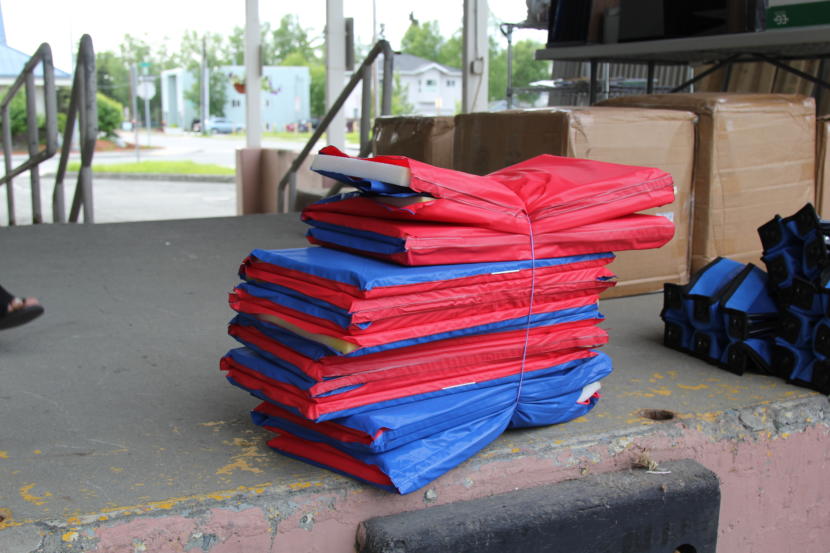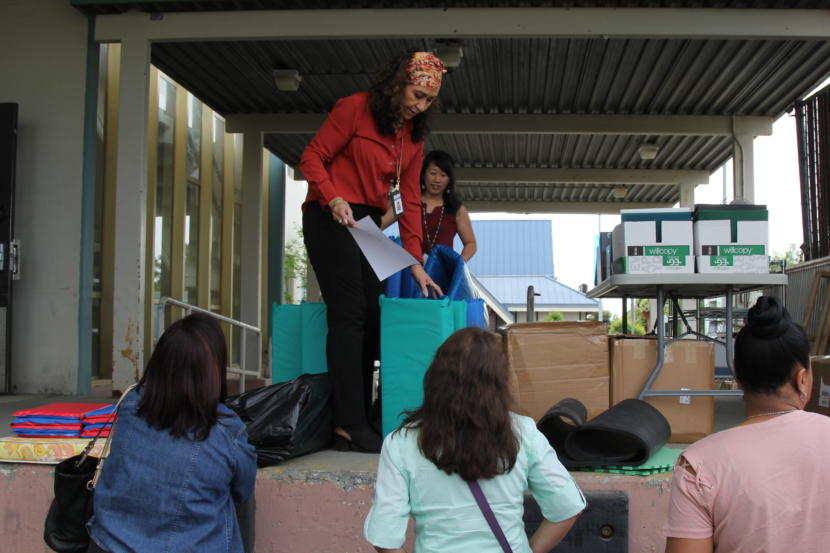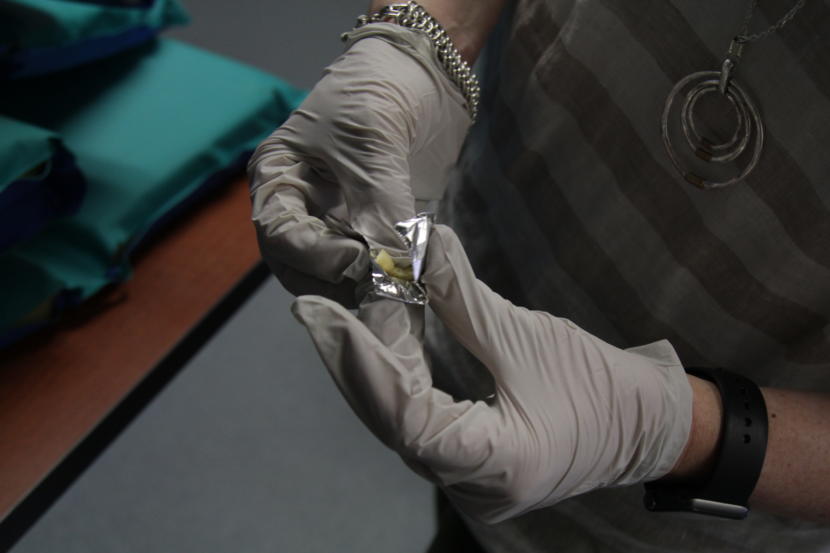
If you’re an Anchorage parent like Cady Lynn O’Brien, you might be hearing for the first time that exposure to foam contained in some nap mats maybe harmful to your child’s development.
O’Brien is the owner of the Creative Learning with Cady Lynn preschool in Anchorage. Last week, she was one of dozens of child care providers at the Anchorage Health Department for a training on what to look for in household products to avoid potentially harmful ingredients.
The training focused on children’s nap mats. City employees gathered mats potentially containing chemical flame retardants and swapped them out for new ones health officials believe are better alternatives.
Flame retardants are designed to inhibit the start or spread of fire in combustible material. Manufacturers often use them to meet federal fire safety rules for mattresses and other furniture. But studies found some chemical flame retardants may be harmful. A 2018 study cited in the city’s training material found nap mats were an important source of flame retardant chemicals in indoor dust.

“So simply by removing these toxic nap mats, we’re greatly reducing exposures to chemicals known to cause harm to children,” said executive director of Alaska Community Action on Toxics Pamela Miller, who led last week’s training.
O’Brien says she left the training feeling concerned, “especially knowing that a lot of the hazardous chemicals are in children’s toys and in things that we buy for a child thinking that it’s safe and it’s not.”
O’Brien had kept the children’s mats covered before but only so they’d stay appealing for the children to treat with care. She was not aware of the potential implications of exposure to the foam padding.
Miller says making sure older mats are properly covered may be one way to go if care providers aren’t able to exchange them right away.
The city’s training is part of a larger commitment several cities have made to do more to protect their most vulnerable residents from exposure to potentially toxic chemicals. It’s called the Bright Cities program. Anchorage signed on last year.
This year, the municipality also passed an ordinance banning four groups of chemical flame retardants from children’s products and upholstered home furniture starting in 2020.

In the meantime, child care providers like O’Brien are putting information from the training to use. She says she started by removing all plastic toys with the number “3” on them from her preschool.
“The next step is just making it a habit to check things when I’m at the store,” O’Brien said.
Miller says many products aren’t required to be labeled so it’s hard to tell which ones contain chemical flame retardants. One way is to look for a label on furniture:
“It’s called the ‘TB-117-2013’ label that is generally on the bottom of a couch or a chair or some of the children’s furniture that tells you if the furniture has a chemical flame retardant added to the foam,” Miller said.
Miller says samples from the mats gathered at the training will be sent to Duke University for analysis. If the pilot is successful, Miller’s organization will look for funding to buy more mats and potentially expand the program statewide.
The next Anchorage training will be held on Saturday, June 15 at the Anchorage Health Department.
